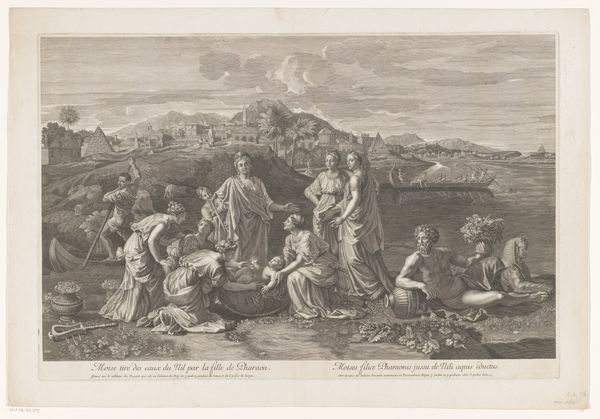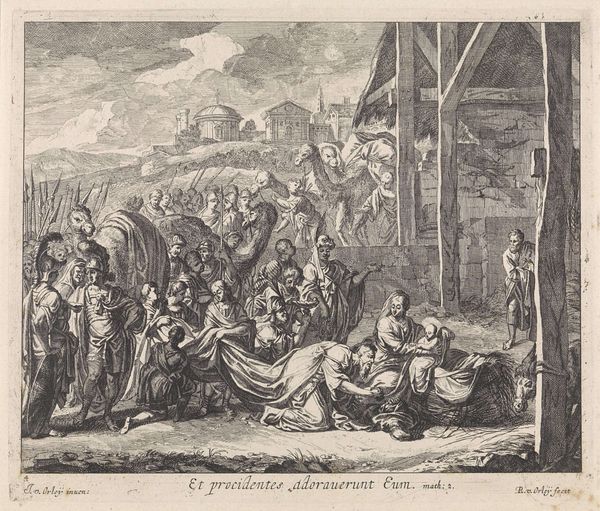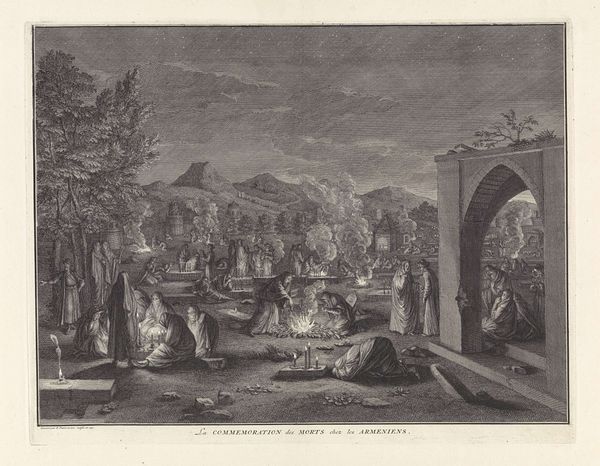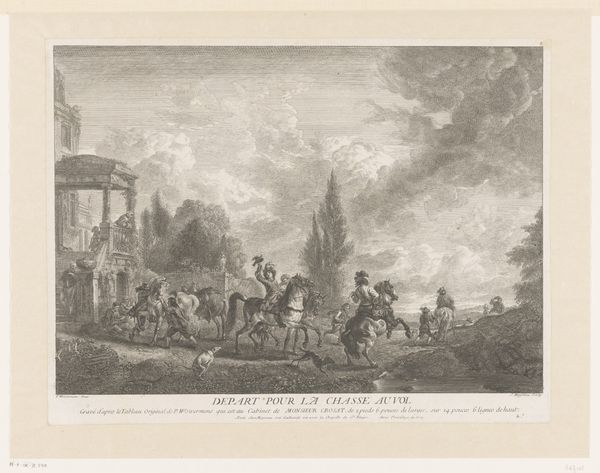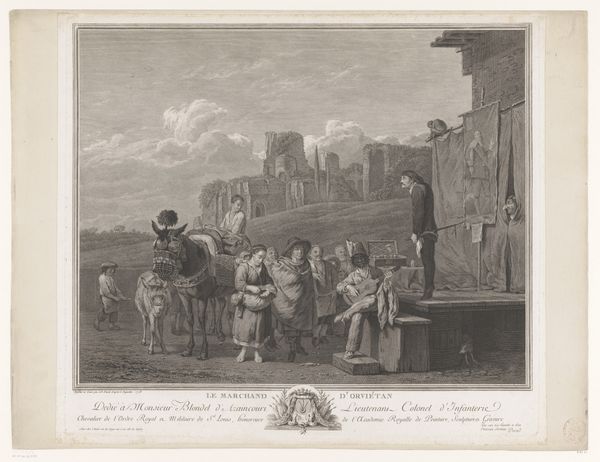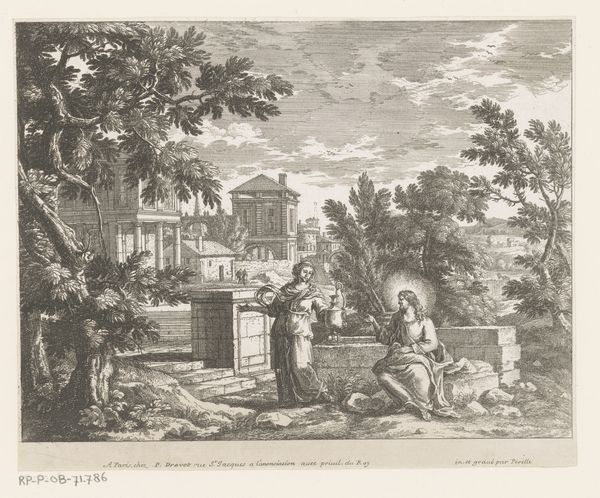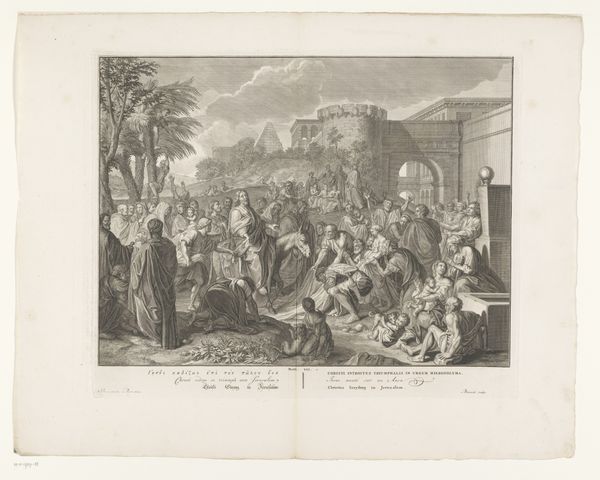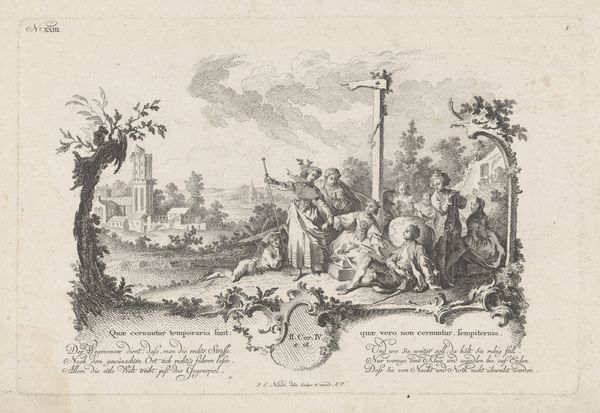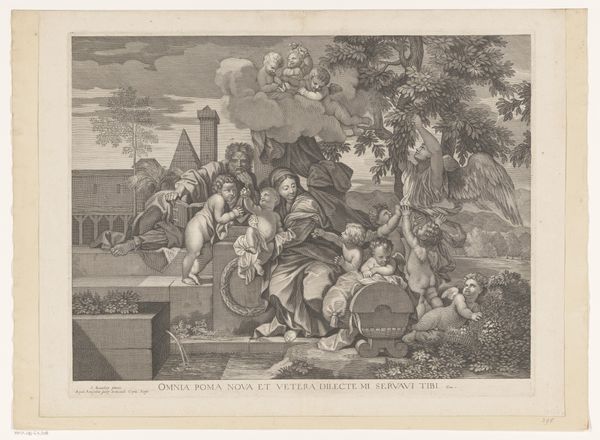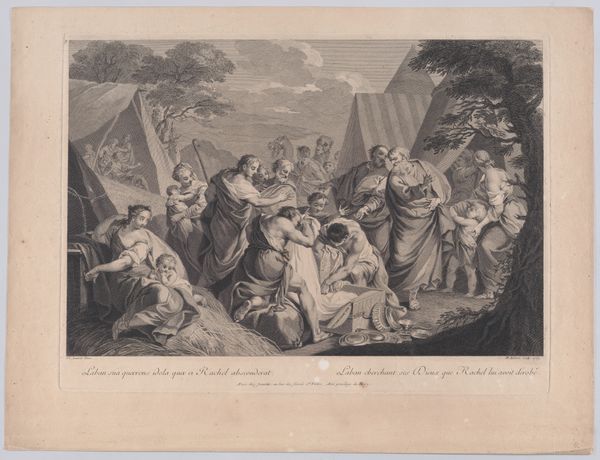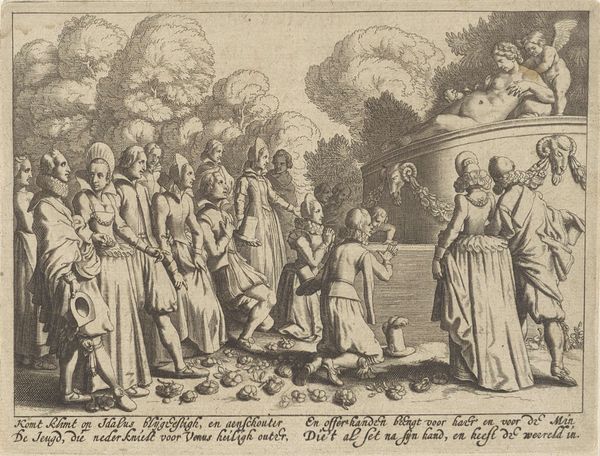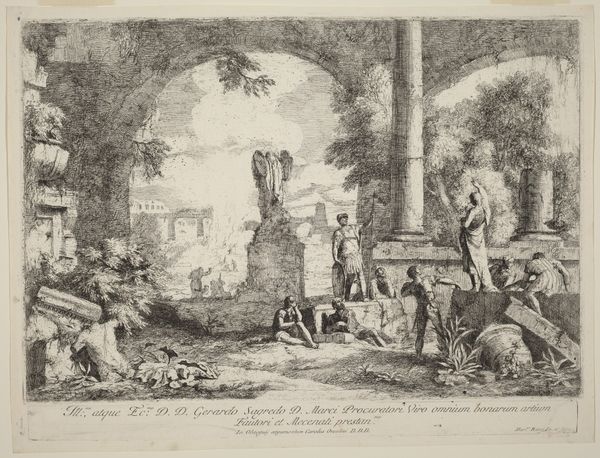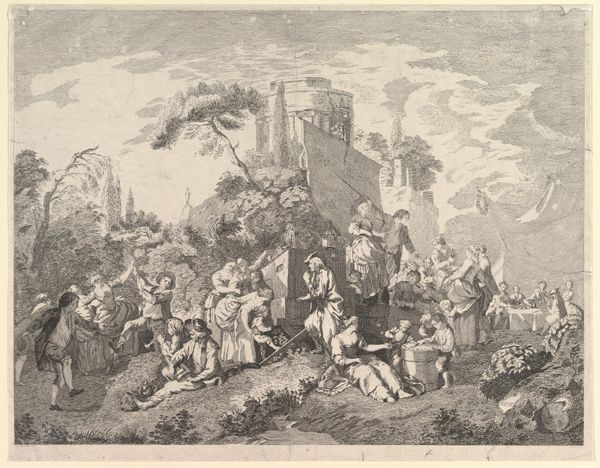
print, engraving
#
narrative-art
#
baroque
# print
#
classical-realism
#
history-painting
#
engraving
Dimensions: height 660 mm, width 987 mm
Copyright: Rijks Museum: Open Domain
Francesco Polanzani made this etching, "Het wegvoeren van oorlogsbuit," capturing the spoils of war with astonishing detail. The lines, etched with acid into a metal plate, then inked and pressed onto paper, speak volumes about 18th-century printmaking. Consider the process involved. Each line, each shadow, represents a deliberate act of labor. This wasn't about the artist's singular genius, but about skill, precision, and a deep understanding of materials and their properties. Etching is inherently reproducible, and this brings up interesting questions about value: if a picture can be made many times over, how precious can it really be? The print shows a classical scene, with classical imagery and classical figures. In Polanzani's time, the imagery would have been extremely popular because it was designed to evoke both the power of ancient empires, and the power of modern empires. The print would have been a commodity circulated to reinforce political and social norms, using carefully calibrated skills and traditions. So, next time you encounter a print, remember it’s not just an image. It’s a product of labor, materials, and social context.
Comments
No comments
Be the first to comment and join the conversation on the ultimate creative platform.
